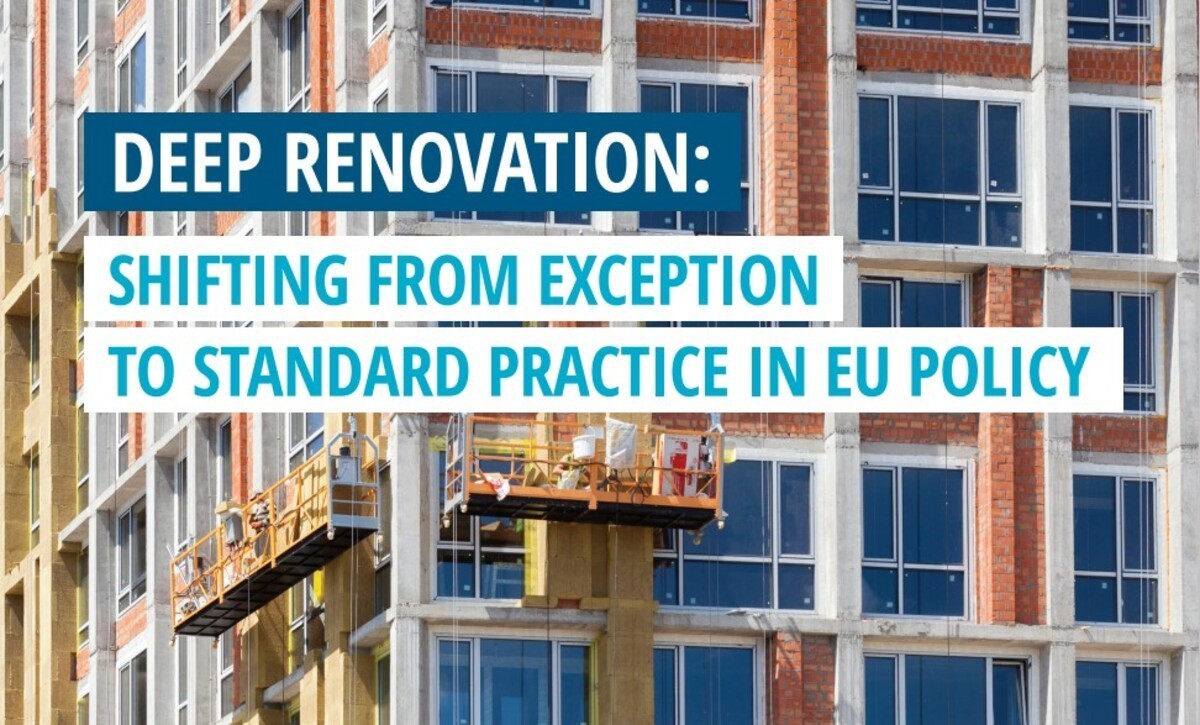Glasgow Climate Pact means that ‘deep renovation’ of buildings must become gold standard for all renovation decisions

BPIE (Buildings Performance Institute Europe) has today released a report arguing that deep – as opposed to shallow – renovation of buildings, must urgently get a legally binding definition at EU level and become standard practice in order to reach climate goals and combat rising fuel prices and energy poverty. This should be included in the European Commission’s revised EPBD, expected before the end of 2021.
“Deep renovation should be the gold standard for any investment decision to upgrade a building, and we need a legal definition to create confidence in the renovation market,” says Oliver Rapf, Executive Director at BPIE.
To date, no binding definition of deep renovation exists at EU level. Several close concepts have emerged in other legislative and non-legislative files, opening the door to misinterpretation and lack of shared understanding on the rate and depth required to decarbonise the building stock and bring it in line with climate-neutrality.
The Renovation Wave put forward by the Commission aims to at least double the annual energy renovation rate by 2030 as well as to foster deep energy renovation. BPIE calculated that to contribute to the reduction of GHG emissions by at least 55% by 2030, the buildings sector GHG emissions should decrease by 60% by 2030 compared to 20152 . This means that the deep energy renovation rate should reach 3% per year as soon as possible before 2030 and be maintained up to 2050. By 2030, 70% of renovations taking place should be deep. BPIE’s report highlights that there is no climate-neutrality possible by 2050 without fully decarbonising the buildings sector.
BPIE argues that deep renovation should minimise energy needs by capturing the full potential of the building to reduce its energy demand, while delivering adequate comfort levels to occupants. The remaining low energy demand should be supplied by renewables, progressively increasing their share within the total supply, towards reaching 100% at the end of the deep renovation process and by 2050 latest. To achieve this, BPIE proposes a clear and forward-looking definition of deep renovation, emphasising that it should always achieve the highest possible energy savings and energy performance, based on typology and climatic zone, and should lead to a very high energy performance. Deep renovation should also lean towards a minimal carbon footprint for both operational and embodied emissions.
Beyond the EU, deep renovation is also a global necessity. Article 26 of the Glasgow Climate Pact emphasizes the urgent need for Parties to increase their efforts to collectively reduce emissions through accelerated action and implementation of domestic mitigation measures.
‘’In the wake of COP26, the EU must show strong leadership by taking decisive action to decarbonise the building stock and setting the standard for other countries to follow. Deep renovation will simultaneously alleviate the burden of rising fuel prices and support vulnerable populations struggling with energy poverty. Deep renovation is a tangible solution to the social and climate challenges we are facing today.’’
Beyond introducing a legally binding definition of deep renovation in the EPBD, BPIE urges the EU to recalibrate its renovation ecosystem of policy, advisory and financing measures in order to trigger the shift to a ‘deep renovation first’ approach, embedding deep renovation into the EPBD and ensuring a consistent approach across all policies.
Read the full report here.



